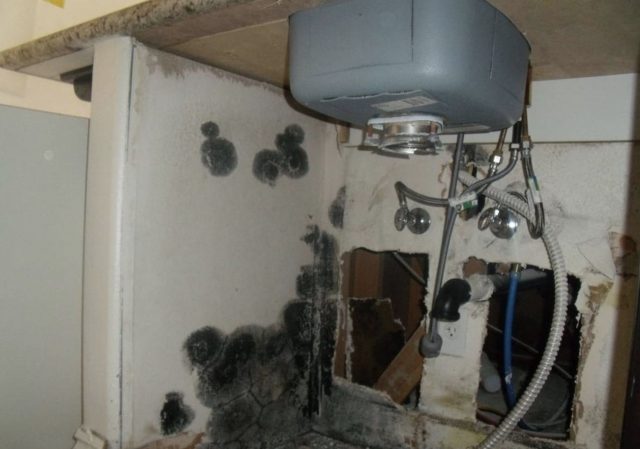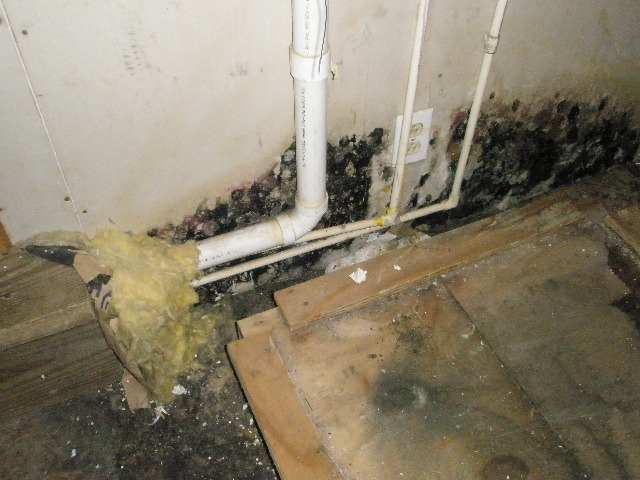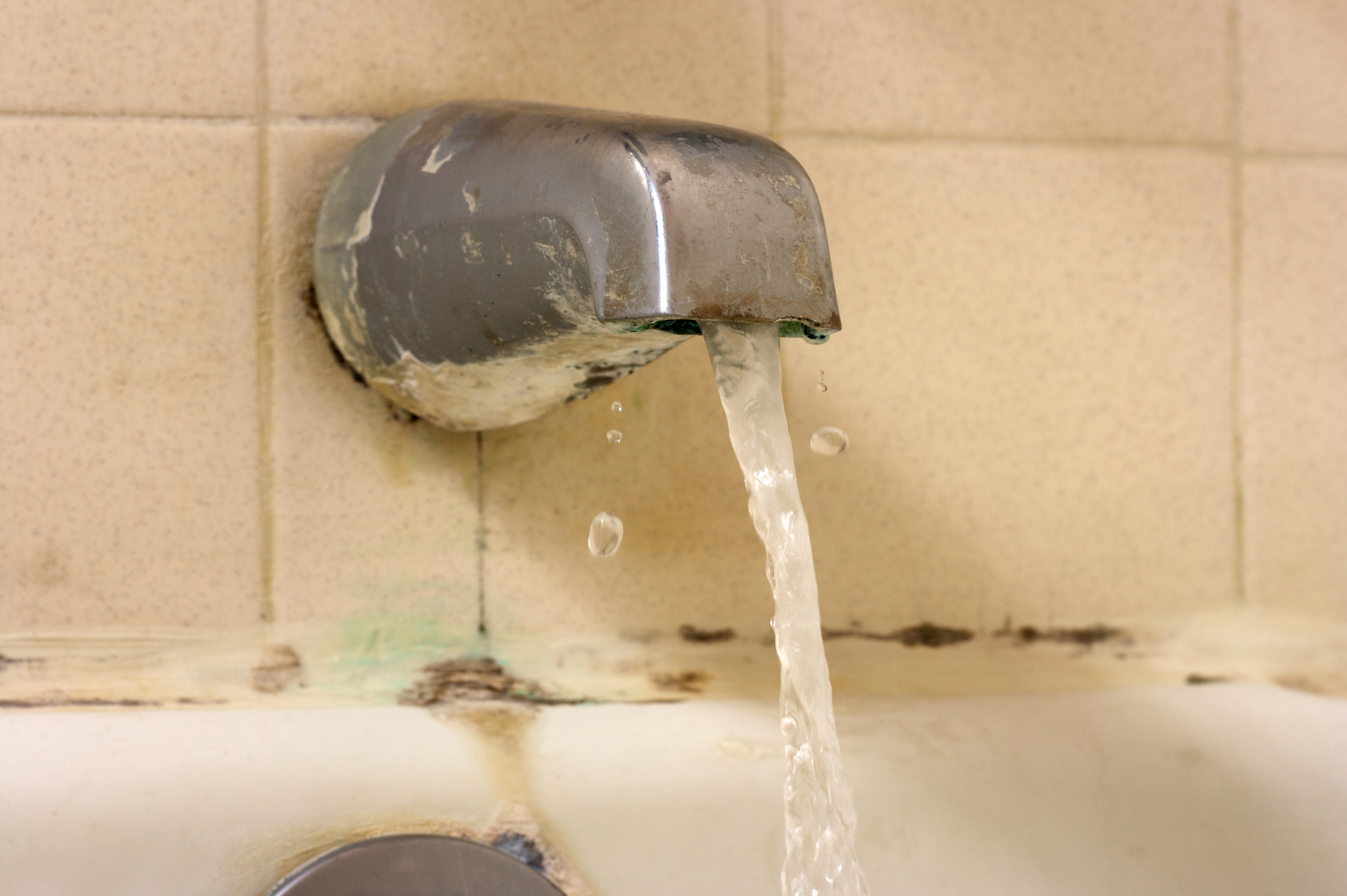Mold and mildew under the kitchen sink can be a major issue for homeowners. Not only is it unsightly, but it can also pose serious health risks for you and your family. So, how do you get rid of this pesky problem? Here are some tips and tricks to help you effectively eliminate mold and mildew under your kitchen sink.How to Get Rid of Mold and Mildew Under the Kitchen Sink
Before we dive into how to get rid of mold and mildew, it's important to understand what causes it in the first place. The main culprit is moisture. Underneath the kitchen sink, there are often pipes and plumbing that can leak, creating the perfect environment for mold and mildew to thrive. Additionally, if there are any spills or leaks from cleaning products, this can also contribute to the growth of mold and mildew.Causes of Mold and Mildew Under the Kitchen Sink
As the saying goes, prevention is better than cure. To prevent mold and mildew from growing under your kitchen sink, it's important to keep the area clean and dry. Wipe down any spills or leaks immediately and regularly check for any signs of moisture or leaks from pipes. You can also install a dehumidifier to help control the humidity levels in your kitchen.Preventing Mold and Mildew Under the Kitchen Sink
If you've already spotted mold and mildew under your kitchen sink, there are some DIY remedies you can try before calling in the professionals. One solution is to mix equal parts of water and vinegar and spray it onto the affected area. Let it sit for a few hours before wiping it away. Another option is to use a mixture of baking soda and water to create a paste, which you can then apply to the mold and mildew and scrub away.DIY Remedies for Mold and Mildew Under the Kitchen Sink
If the mold and mildew under your kitchen sink is extensive or has been left untreated for too long, it's best to call in the professionals. They have the proper equipment and expertise to effectively eliminate the mold and mildew and prevent it from coming back. This may be a more costly option, but it's worth it for the health and safety of your home.Professional Mold and Mildew Removal Services
It's important to keep an eye out for any signs of mold and mildew under your kitchen sink. Some common signs include a musty odor, discoloration on surfaces, and a fuzzy or slimy texture. If you spot any of these signs, it's best to take action immediately to prevent the mold and mildew from spreading.Signs of Mold and Mildew Under the Kitchen Sink
Mold and mildew can pose serious health risks if left untreated. Breathing in mold spores can irritate the respiratory system and even cause allergic reactions. It can also trigger asthma attacks in those who suffer from the condition. To protect the health of your family, it's important to address any mold and mildew issues under your kitchen sink as soon as possible.Health Risks of Mold and Mildew Under the Kitchen Sink
Once you have successfully removed the mold and mildew, it's important to thoroughly clean and disinfect the area. Use a mixture of bleach and water to kill any remaining spores and bacteria. Be sure to wear gloves and a mask to protect yourself from the fumes. After cleaning, make sure to dry the area completely to prevent future growth.How to Clean and Disinfect Under the Kitchen Sink
If the mold and mildew have caused damage to any materials under your kitchen sink, it's important to replace them. This may include pipes, cabinets, or even flooring. It's best to consult with a professional to determine the extent of the damage and the best course of action for replacement.Replacing Damaged Materials Under the Kitchen Sink
To avoid mold and mildew from becoming a recurring problem under your kitchen sink, it's important to practice regular maintenance. This includes checking for leaks and moisture regularly, keeping the area clean and dry, and addressing any issues immediately. With proper care and attention, you can prevent mold and mildew from growing and protect the health of your home.Regular Maintenance to Prevent Mold and Mildew Under the Kitchen Sink
Preventing Mold and Mildew Under Your Kitchen Sink

The Dangers of Mold and Mildew
 Mold and mildew are not only unsightly, but they can also pose serious health risks to you and your family. These fungi thrive in dark, damp environments, making the space under your kitchen sink a prime breeding ground. Exposure to mold and mildew can cause respiratory issues, allergies, and even skin irritation. Not to mention, it can also lead to structural damage to your home. That's why it's important to take preventive measures to keep mold and mildew at bay.
Mold and mildew are not only unsightly, but they can also pose serious health risks to you and your family. These fungi thrive in dark, damp environments, making the space under your kitchen sink a prime breeding ground. Exposure to mold and mildew can cause respiratory issues, allergies, and even skin irritation. Not to mention, it can also lead to structural damage to your home. That's why it's important to take preventive measures to keep mold and mildew at bay.
Identifying the Problem
 The first step in preventing mold and mildew under your kitchen sink is to identify the problem. Look for any signs of moisture, such as water stains or a musty odor. Check for any leaks in your plumbing or faucet, as these can create the perfect environment for mold and mildew to grow. If you spot any visible mold or mildew, it's important to address it immediately before it spreads and becomes a bigger issue.
The first step in preventing mold and mildew under your kitchen sink is to identify the problem. Look for any signs of moisture, such as water stains or a musty odor. Check for any leaks in your plumbing or faucet, as these can create the perfect environment for mold and mildew to grow. If you spot any visible mold or mildew, it's important to address it immediately before it spreads and becomes a bigger issue.
Cleaning and Disinfecting
 Once you've identified the problem, it's time to clean and disinfect the area. Use a mixture of water and
bleach
to scrub away any visible mold and mildew. Make sure to wear protective gear, such as gloves and a mask, to avoid inhaling any harmful spores. After cleaning, thoroughly dry the area to prevent any remaining moisture from promoting the growth of mold and mildew.
Once you've identified the problem, it's time to clean and disinfect the area. Use a mixture of water and
bleach
to scrub away any visible mold and mildew. Make sure to wear protective gear, such as gloves and a mask, to avoid inhaling any harmful spores. After cleaning, thoroughly dry the area to prevent any remaining moisture from promoting the growth of mold and mildew.
Preventative Measures
 To prevent mold and mildew from reappearing, there are a few preventative measures you can take. First, make sure the area under your kitchen sink is well-ventilated. You can use a fan or open a window to allow for proper air circulation. Additionally, consider installing a dehumidifier to remove excess moisture from the air. It's also important to regularly check for any leaks and fix them promptly to prevent any moisture buildup.
To prevent mold and mildew from reappearing, there are a few preventative measures you can take. First, make sure the area under your kitchen sink is well-ventilated. You can use a fan or open a window to allow for proper air circulation. Additionally, consider installing a dehumidifier to remove excess moisture from the air. It's also important to regularly check for any leaks and fix them promptly to prevent any moisture buildup.
Organizing the Space
 One of the best ways to prevent mold and mildew is to keep the space under your kitchen sink clean and organized. Avoid storing any damp or wet items in this area, as they can contribute to the growth of mold and mildew. Use waterproof containers to store cleaning supplies and place a mat or tray under pipes to catch any potential leaks. Regularly check and wipe down the area to keep it dry and free of any potential breeding grounds for mold and mildew.
One of the best ways to prevent mold and mildew is to keep the space under your kitchen sink clean and organized. Avoid storing any damp or wet items in this area, as they can contribute to the growth of mold and mildew. Use waterproof containers to store cleaning supplies and place a mat or tray under pipes to catch any potential leaks. Regularly check and wipe down the area to keep it dry and free of any potential breeding grounds for mold and mildew.















































































